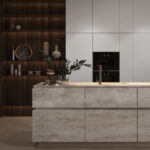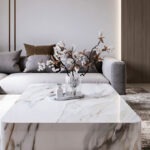Villa Interior and Majlis Interior – Differences
When it comes to interior design in the Middle East, particularly in the UAE, two distinctive styles stand out: villa interiors and majlis interiors. Both hold unique cultural and functional significance, creating spaces that are both aesthetically pleasing and deeply rooted in tradition. Understanding the difference between these two styles can help homeowners and designers create environments that perfectly suit their needs and preferences.
Villa Interior Design: A Blend of Comfort and Luxury
Purpose and Functionality
Villa interiors focusing residential living in mind, aiming to create comfortable and functional spaces for families. These homes are often spacious, featuring multiple rooms including bedrooms, living areas, kitchens, and bathrooms. The primary goal is to provide a harmonious living environment that caters to the daily needs and lifestyles of the residents.
Design Styles
Villa interiors offer a wide range of design styles, from modern and contemporary to classic and traditional. The choice of style often reflects the personal tastes of the homeowners. For instance, modern villas may showcase clean lines, minimalistic decor, and innovative use of materials like glass and steel. In contrast, traditional villas might feature ornate details, rich color, and luxurious fabrics.
Layout and Flow
A key aspect of villa interior design is the balance between open and private spaces. Open-plan layouts are popular, facilitating easy movement and a sense of spaciousness. Living rooms, dining areas, and kitchens often flow seamlessly into one another, while bedrooms and bathrooms offer privacy and composure.
Materials and Finishes
Villas typically use a diverse range of materials such as wood, stone, glass, and metal. High-end finishes like marble countertops, custom cabinetry, and designer lighting fixtures add a touch of luxury. The choice of materials is mainly on durability and aesthetic appeal, ensuring the space is both beautiful and practical.
Majlis Interior Design: A Reflection of Culture and Hospitality
Purpose and Functionality
The majlis is a traditional Arabic space using for receiving guests and hosting social gatherings. It is a symbol of hospitality and respect, often reflecting the cultural heritage of the region. Unlike villa interiors, which are primarily for family use, the majlis is a formal space for interaction and conversation.
Design Styles
Majlis interior design to add their traditional and ornate design elements. They often feature intricate patterns, rich textiles, and elaborate decor. Elements such as Islamic art, calligraphy, and traditional crafts are using for enhancing the cultural ambiance of the space. The design style of a majlis is usually more uniform when comparing to the varied styles seen in villas.
Layout and Flow
The layout of a majlis is designed to facilitate social interaction. Seating is typically arranged around the perimeter of the room, with comfortable cushions or sofas providing ample seating for guests. This central seating arrangement creates an open and welcoming environment, making it easy for guests to engage in conversation.
Materials and Finishes
Luxurious materials like silk, velvet, and brocade are commonly used in majlis interiors. These fabrics are often chosen for their rich textures and vibrant color. Decorative elements such as ornate chandeliers, carved wooden panels, and detailed tile work add to the opulence of the space. The emphasis is on creating a visually striking and culturally significant environment.
In summary, villa interior design focuses on creating a functional, comfortable, and aesthetically pleasing living space for families, with a wide range of design styles to choose from. In contrast, majlis interior design centres on providing a formal, culturally rich space for social gatherings and hospitality, featuring traditional and ornate elements. Understanding these differences is crucial for anyone looking to design a home or a majlis that truly reflects their needs and cultural values.











